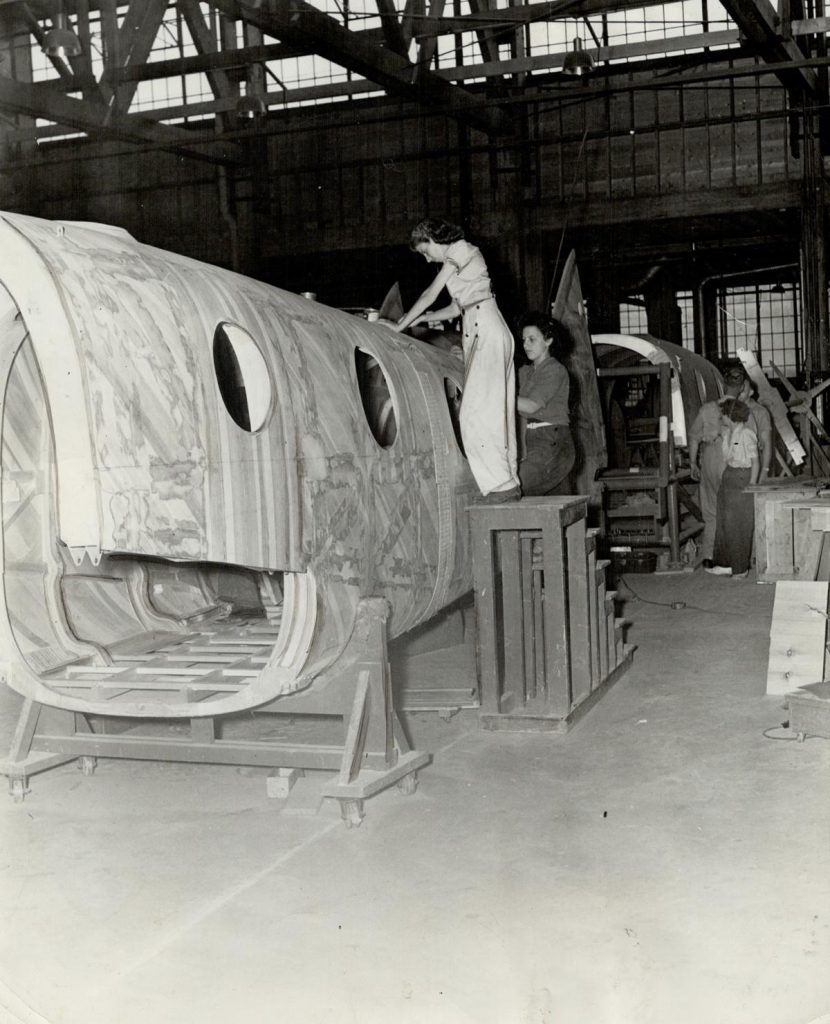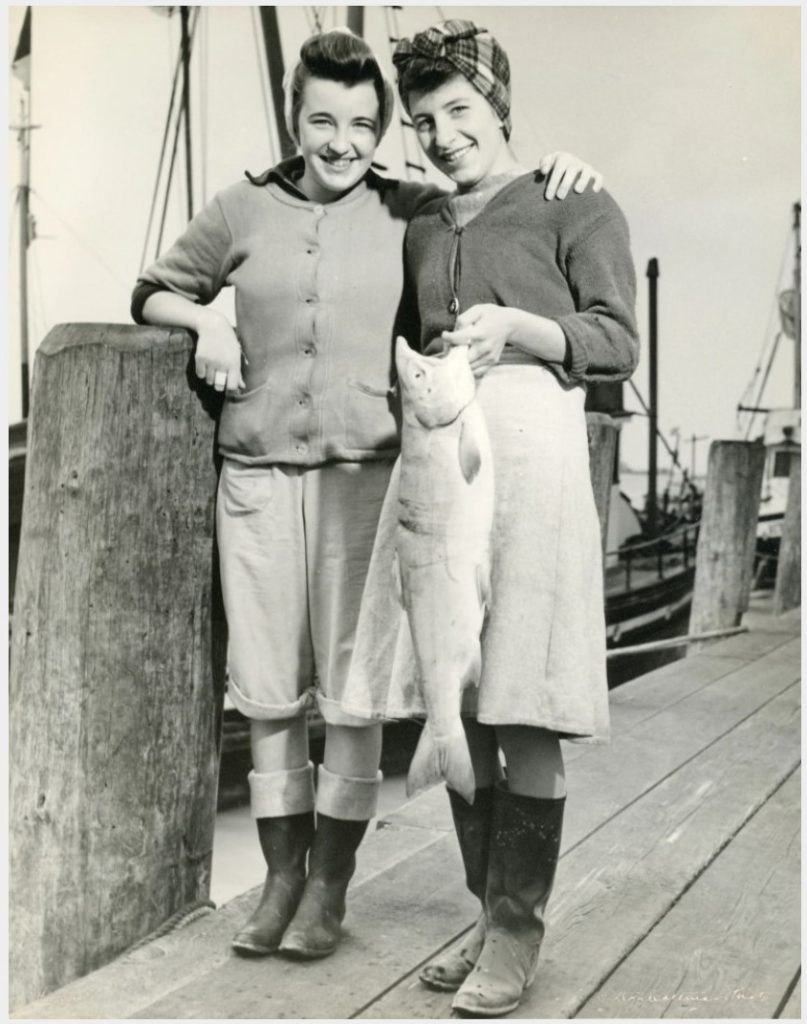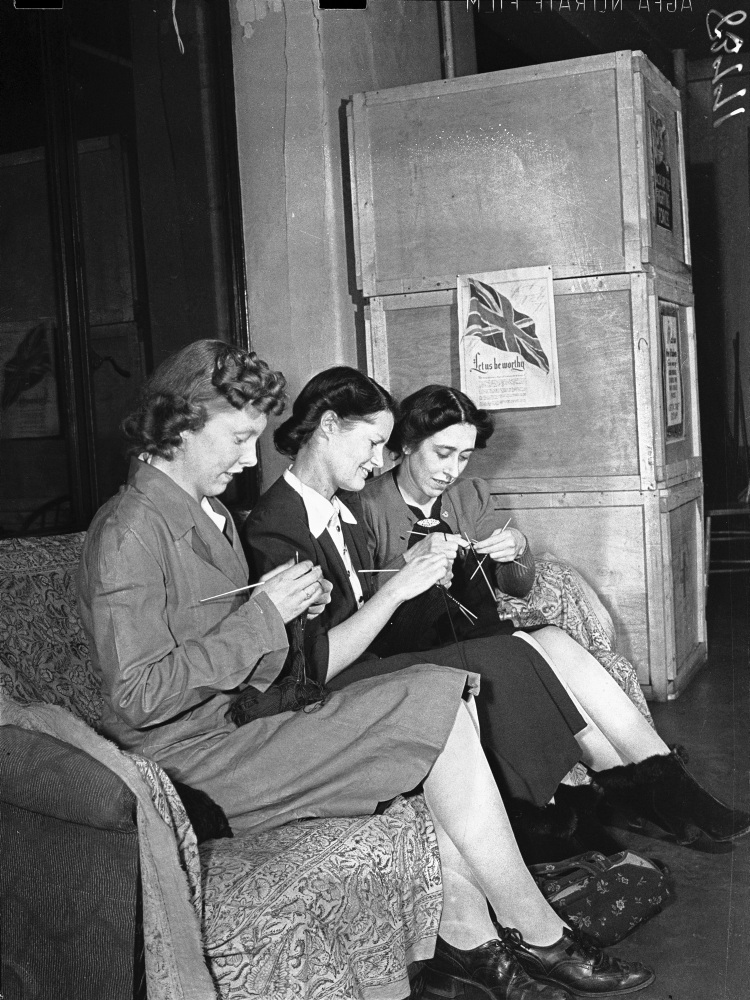It is now November and that means Remembrance Day is just around the corner (Nov 11th). So I thought to honour this upcoming day that I would do a part 2 appreciation photo post about ‘Canadian Women’s Role’s on the Home Front during WW2’ (please find part 1 HERE).
Let’s begin!
Canadian Women on the Home Front-WW2
Source: postagestampguide.com
Some Facts About Women on the Home Front:
During the war, many women took a wide variety of civilian jobs that had once been filled by men.
- Out of a total Canadian population of 11 million people, only about 600,000 Canadian women held permanent jobs when the war started. During the war, their numbers doubled to 1,200,000.
- At the peak of wartime employment in 1943-44, 439,000 women worked in the service sector, 373,000 in manufacturing and 4,000 in construction
- Women’s smaller physical size and manual dexterity helped them develop a great reputation for fine precision work in electronics, optics, and instrument assembly.
- With their sons overseas, many farm women had to take on extra work. One Alberta mother of nine sons – all of them either in the army or away working in factories – drove the tractor, plowed the fields, put up hay, and hauled grain to elevators, along with tending her garden, raising chickens, pigs and turkeys, and canning hundreds of jars of fruits and vegetables.
- Women who worked with lumberjacks and loggers during the war were called “lumberjills.”
- Canada’s Elsie Gregory MacGill (see a cool very short video about her below) was the first woman in the world to graduate as an aeronautical engineer. She worked for Fairchild Aircraft Limited during the war. In 1940, her team’s design and production methods were turning out more than 100 Hurricane combat aircraft per month (Source)
The Vintage Photos:
Sunshine Waterloo Company Limited – Inspection of adapters for 2″ Smoke Bombs by the Inspection Board of the United Kingdom and Canada. Note the poster on the wall in the background promoting accurate work.
ABOUT: The Sunshine Waterloo Company (later SunarHauserman Limited) was started in 1930 as a joint venture of the H.V. McKay Company of Melbourne, Australia and the Waterloo Manufacturing Company, Limited to make combines for the North American and Argentine markets.
During the Depression the grain harvesters were being phased out as the farmers could not afford to buy them, and the company produced automotive stampings for cars. Waterloo Manufacturing withdrew from the joint venture in 1934. The company expanded to bed warmers, baby carriages, roller skates and industrial steel shelving. In 1939 Sunshine began manufacturing bombs, land mines, army truck doors, gun mounts, airplane parts and complete nose assemblies for the Mosquito fighter-bomber. The company operated around the clock and was Waterloo’s largest employer during the war years (Source).

Source: Waterloo Public Library
1943 photo from the Toronto Star: Final touches are applied to a completed plane fuselage. Put together in three sections; the plywood fuselage is cheaper and said to be more serviceable and stronger than the metal product.
Source: Toronto Public Library Digital Archive – Toronto Star
June 21, 1943. Bernice Coulter soldering airplane parts, DeHavilland factory.
Source: City of Toronto Archives Fonds 1266, Item 83188
Women soldering and assembling cables for airplanes, Canadian Car and Foundry Co., 1945.

Source: sfu.ca
1942 photo of a Canadian “Rosie the Riveter”.
Original Toronto Star caption: “She didn’t even look up when the photographer’s bulb flashed. She’s Georgina Ogilvie; and she’s riveting on a bomber. Girls regularly do this now.” (source).

Source: Toronto Public Library Archives
This booklet produced by Boeing Canada gave new female employees tips on how to be safe in an industrial setting, which until the war was unavailable to them.

City of Richmond Archives reference files
Cecilia Butler working in the John Inglis Company munitions plant in Toronto, December 1943.
On the home front, Black Canadians made important contributions by working in factories that produced vehicles, weapons, ammunition and other materials for the war effort, and taking part in other patriotic efforts like war bond drives. Black women worked in vital jobs in various industries, for example, in munitions factories in Central Canada and shipbuilding yards in Nova Scotia (Source).
FURTHER READING: Black Canadians in uniform — a proud tradition
Source: Veterans.gc.ca
1940s photo of two women holding a salmon at a Cannery.
Food production was another industry that was vital to the war effort. “Salmon for Britain” was a slogan used to encourage productivity in local canneries.
One of thos canneries, was the Gulf of Georgia Cannery, one of B.C.’s largest canneries located in Steveston Village, during the 1940s (I have been there and seen the cannery museum. I highly recommend!).
“The Cannery always employed women, it wasn’t new, but it did change during the Second World War, when there was more need for women to work in factory,” said Shannon King, manager of audience engagement of Gulf of Georgia Cannery Society, to the Richmond News.
In 1941, 35 canneries in B.C. packed a record two million cases of salmon, two thirds of which was sent to Great Britain, where war stalked the land. In 1942, Great Britain received all of the salmon canned in B.C.
“Canned fish was extremely important during war time, not only for soldiers, but also for civilians,” said King.
“Because it was high in protein and easily transportable. It was helpful that at the front, people were able to just open the can and eat it; for civilians, it was cheap protein.” (Source & a great article on these women).
City of Richmond Archives, Photograph #1985 4 1759
1940s vintage photo in front of the ‘Ontario Farm Service Force Camp’ sign. Future…Farmerettes.
Who were Farmerettes?
Nov 2024 Update: Please take a moment to read my blog post- Canada’s WW2 Home Front History – The Farmerettes
When the farm labour shortage was acute during the war years, these young women planted, hoed, hand-weeded, thinned, staked, picked fruit and harvested vegetables. Helping to increase food production for Ontario (and Great Britain) was so important.
The Ontario Farm Service Force initiated the Farmerette program in 1941 and it continued until 1953. In conjunction with the YWCA, the Department of Agriculture as well as the Department of Education, Farmerette Camps were established and farmers and growers subscribed to the plan (Source).
You can read all about these hard working women in this 2019 book: Onion Skins and Peach Fuzz: Memories of Ontario Farmerettes by Shirleyan English & Bonnie Sitter.

Source: www.harrowsmithmag.com
Dorothy McCabe, Queenie Edward, and Edith Allen knitting in a Red Cross workroom, March 2nd, 1943.
Knitting was a popular way for civilians (including men and children as well as women) to directly and personally help the men and women overseas. Basic articles of clothing such as socks, scarves, and sweaters were always useful. The Red Cross also produced a booklet of patterns for specific uses, including mitts designed for those using rifles or radio equipment, caps to be worn under steel helmets, and amputation covers and bed socks for convalescents (Source).
Source: The Toronto Archives
Violet Carlson, working at the Small Arms Manufacturing plant October 13, 1943.
The Small Arms Inspection Building is located on the 15.7 hectare parcel of land known as the Arsenal Lands on the eastern border of Mississauga’s waterfront. In 1940, the site became a large munitions plant manufacturing rifles and small arms for the Canadian Army through the Second World War until 1974. Small Arms Limited recruited and supported a significant number of women, who made up about two-thirds of the factory’s workforce. This was critical to changing the role of women and recognizing their significance to the workforce in Canada.
Read all about these women in a archived blog post I have written: Canada’s WW2 Home Front Effort: The Small Arms Inspection Building
Source: City of Toronto Archives
1941 photo of the Women’s Red Cross, Food Administration Section in a parade in front of Toronto City Hall.
Source: Toronto Public Library Digital Archive
April 16th, 1942. Women workers stitch service uniforms using sewing machines at the Great Western Garment Co (Edmonton, Alberta).
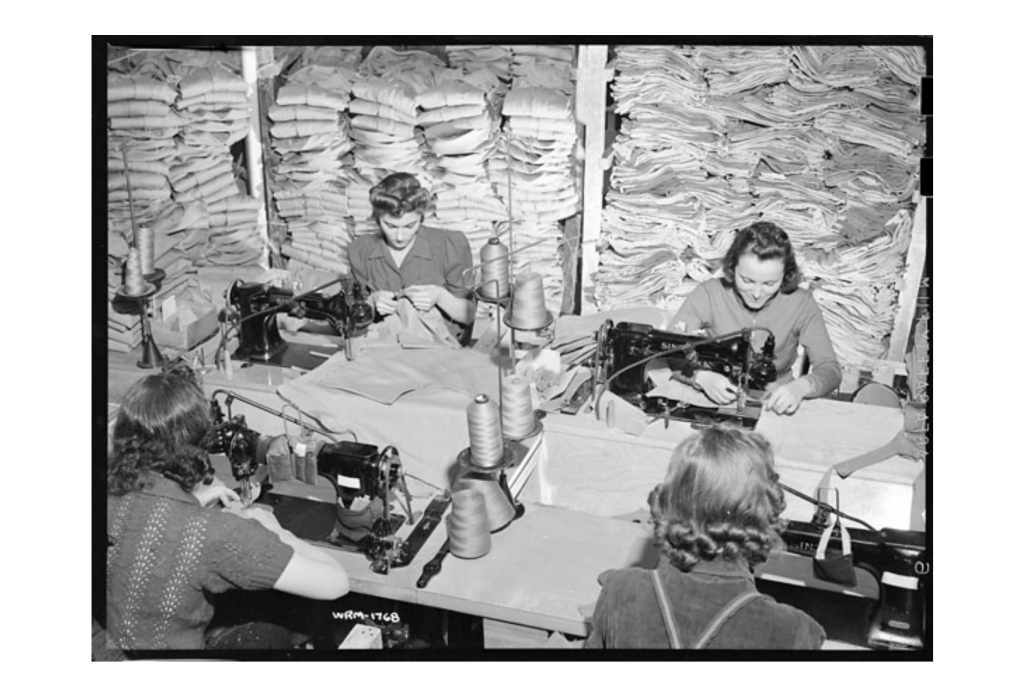
Source: Archives of Canada
1940s photo of women and men in the sewing room at Tip Top Tailor making uniforms for Canadian soldiers.

Source: sfu.ca
Photograph of Madge Macbeth (Canadian writer) raising money for war bonds (late 1930’s photo).
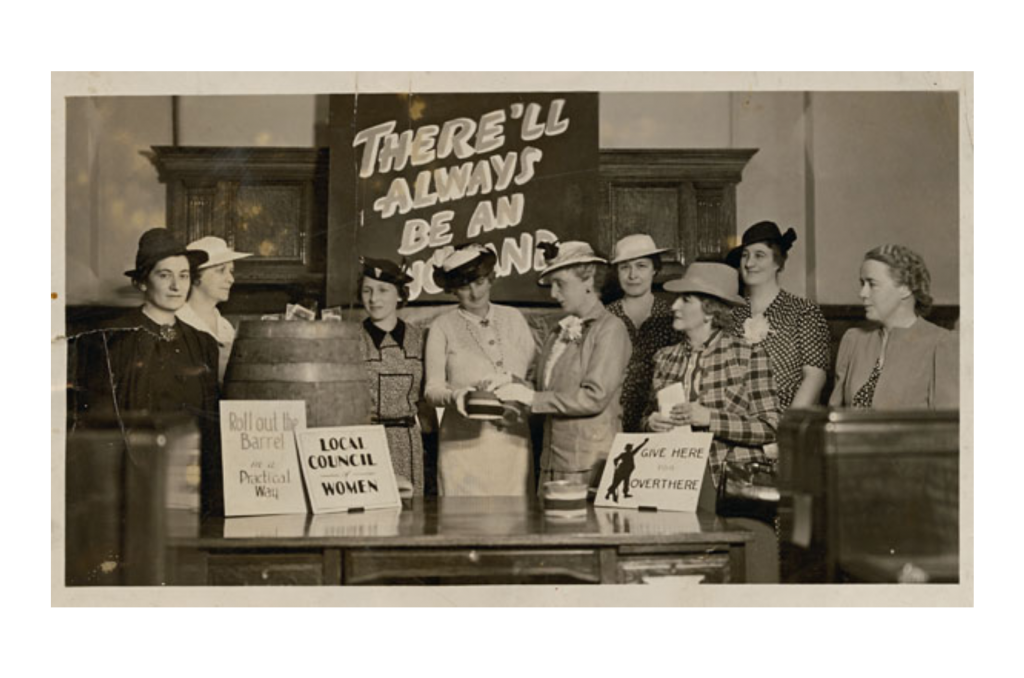
Source: Archives of Canada
Thank you for your service!
FURTHER READING:
Thanks for dropping by and spending some time at the Vintage Inn. I look forward to welcoming you back!
Liz


